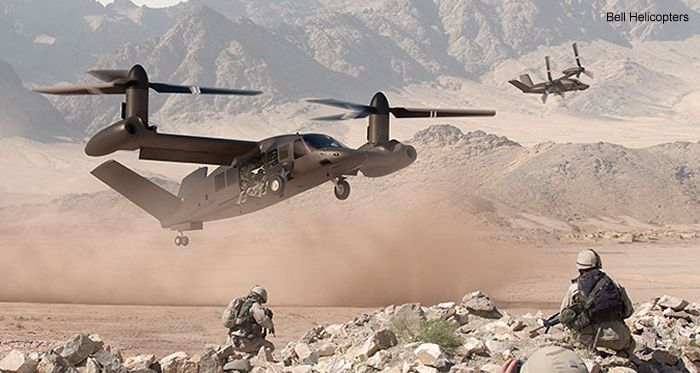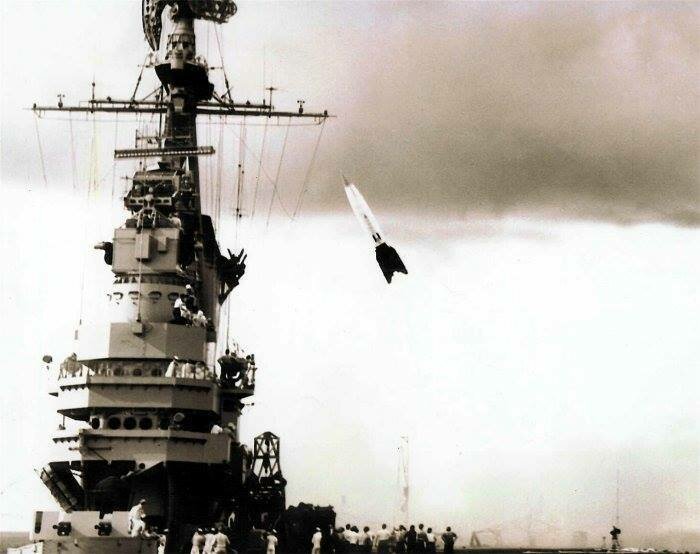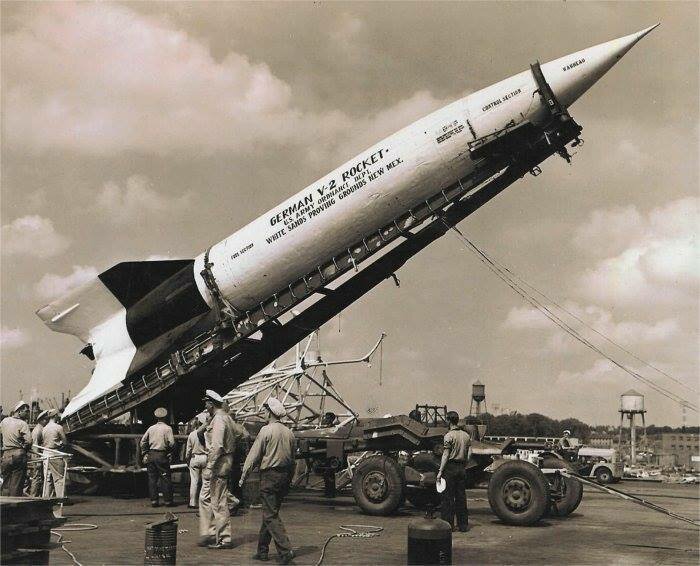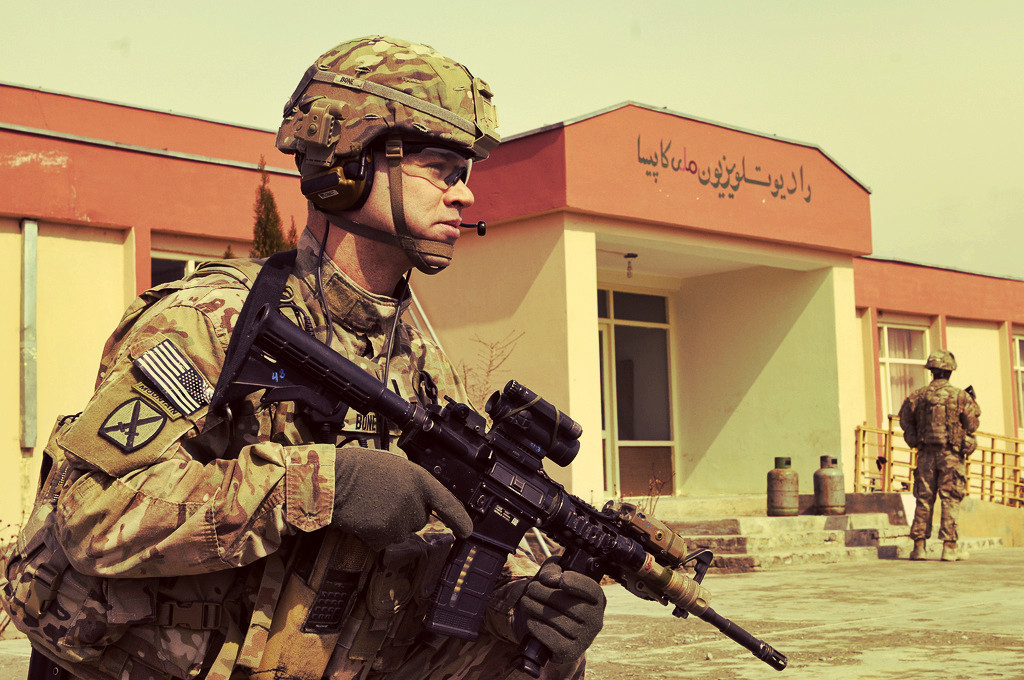Bell, Sikorsky Showcase Different Concepts for Army Helo | Defense News: Aviation International News
Helicopter manufacturers showcased their competing concepts for a future Army rotorcraft at the Association of the U.S. Army (AUSA) conference in Washington, D.C., this week—one a tiltrotor and the other a compound helicopter. Both aim to meet the Army’s demanding specifications for its future medium-class rotorcraft to replace the UH-60 Black Hawk, including 230-knot cruising speed and the ability to hover in “hot and high” conditions.
Bell Helicopter featured a mock-up of the V-280 Valor tiltrotor, which is contending for the Army’s joint multi-role technology demonstration (JMR-TD) phase 1 effort to develop and fly a medium-class demonstrator by 2017. Sikorsky Aircraft brought the second of two flight-test prototypes of its S-97 Raider, which it describes as a technology demonstrator for the larger SB-1 Defiant rotorcraft that Sikorsky and Boeing are developing for the JMR-TD phase 1 requirement. The industry-funded Raider is a compound helicopter with coaxial, counter-rotating main rotors and a pusher propeller; so too will be the Defiant.
The Army’s Aviation Technology Directorate chose the Bell and Sikorsky-Boeing teams
to build JMR TD demonstrators in August 2014, eliminating two other industry contenders. Lockheed Martin serves as a major partner on the Bell team, and with its
planned $9 billion acquisition of Sikorsky, announced in July, Lockheed Martin now spans both teams. Speaking at the AUSA conference, Bell CEO John Garrison said Lockheed Martin’s ownership of Sikorsky shouldn’t complicate his company’s JMR-TD development, although it has caused their contractual relationship to change.
When the acquisition was announced, “the team at Lockheed called me and they said, ‘Listen this is the world that we operate in. We can put in firewalls,’” Garrison said. “We actually had a contractual change where they committed to a lot of the things that they were in fact doing as part of the program. Lockheed has been a great teammate. They’ve done everything we have asked—plus. We believe they are going to continue to do that.”
Mark Miller, Sikorsky vice president of research and engineering, had a similar response when asked if Lockheed Martin’s involvement as mission-system provider on the V-280 Valor affects the SB-1 Defiant program. There is “zero complication from that arrangement,” he said.
Otherwise, Bell and Sikorsky see their JMR-TD prospects differently. Garrison said the V-280 Valor will benefit from more than 300,000 flight hours of experience the Marine Corps and Air Force have accumulated with the V-22 tiltrotor. The V-280 design differs, however, in that its proprotor engines will remain fixed in the horizontal plane instead of rotating. Last month, Spirit AeroSystems delivered the composite fuselage for the future Valor, which is now being assembled at Bell’s facility in Amarillo, Texas.
“This isn’t version one,” Garrison said. “The fact that the tiltrotor technology has got 300,000-plus hours, and the simple physics of being able to have a wing, provide significant advantages [for] speed, payload and range. We think the physics are in our favor for a tiltrotor design. We’ve got proven technology that we’re taking to the next level, and we think that’s going to be the winning combination.”
Sikorsky experimental test pilot Bill Fell was bullish about a compound helicopter design, which for Sikorsky traces to its record-setting
X2 technology demonstrator. “The hallmark of X2 technology is that these aircraft go fast,” Fell said during a walkaround of the S-97 Raider. “This is 220-to-230-knot machine depending on what configuration you have in terms of drag, whether you have weapons on the side or you don’t. But beyond that, it does things that traditional helicopters do well also. Ten thousand feet [altitude], 95 degrees, hover out-of-ground-effect capability at mission gross weight is what we’ve designed for.”
Miller said the 11,500-pound Raider serves as a technology demonstrator for the Defiant, which will be a 30,000-pound-class aircraft. “It’s a tech demonstrator for our offering in the JMR medium [competition], a 30,000-pound-plus vehicle,” he explained. “A lot of what’s coming out of here from a technology perspective, the demonstration in flight, systems integration…are going into risk reducing that program.”
The Raider might also be advanced for the Army’s Future Vertical Lift (FVL) light rotorcraft requirement, Miller suggested. “This is clearly targeted at an armed scout configuration, and it can [also] be an FVL light,” he said.
























